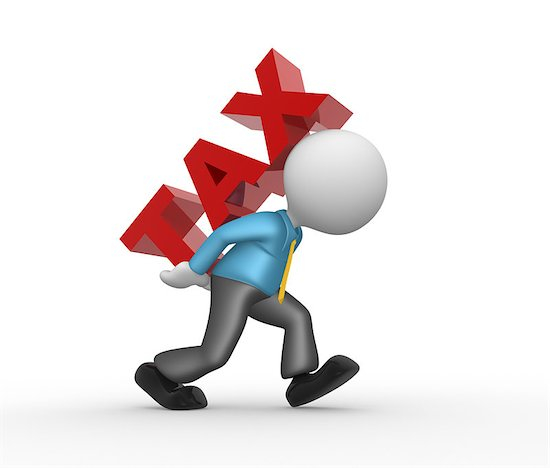Withdrawals from RESPs
You probably have a lot of questions regarding making withdrawals from your RESP account, including the following:
- How are the withdrawals taxed and to whom?
- What are the differences between a withdrawal of original contributions and the Education Assistance Payment (EAP)?
- What education costs can the RESP monies cover?
- Are there restrictions in how much EAP can be withdrawn?
- How are the withdrawals taxed and to whom?

When discussing withdrawals, we often only think in terms of the withdrawals to help pay for a student beneficiary’s educational costs, but we must also think about how the withdrawn funds are to be treated for income tax purposes.
Tax treatment of RESP withdrawals
Let’s say you have been making your RESP contributions for 20 years and the time has come when you want to make some withdrawals to either help pay for education costs. Your after-tax contributions have been made, tax-free government grants (CESGs) have been received, and the RESP’s investment earnings have been sheltered from all taxation. Everything has gone according to plan. You have saved and accumulated the funds needed to pay for your child’s education by taking advantage of the government’s offer of free money in the form of grants and no taxation on your RESP earnings. But now you are about to begin withdrawing money from your RESP account and the Canada Revenue Agency (CRA) requires that tax be paid upon the tax-free grant monies and the income earned and sheltered from income tax.

As a result, when you withdraw funds from your RESP account, the withdrawn funds must be classified as a Refund of Contributions or an Education Assistance Payment (EAP), or a combination of the two.Each is briefly described below.
- A Refund of Contributions (sometimes referred to as principal or capital), which is simply a withdrawal of your original contributions. Because the original contributions were made from your after-tax income, you are allowed to withdraw these without paying any additional income tax. A Refund of Contributions can be made payable to the subscriber or the student.
- An EAP, which is treated as taxable income. The EAP is a withdrawal of funds that originate from the tax-free government grants received and the tax-sheltered accumulated income earned (interest, dividends and capital gains) in the RESP account. Because these funds have never been subject to any form of taxation, the CRA requires that EAPs be claimed as taxable income and the financial institution must issue income tax receipts. An EAP can be made payable to the student or directly to a qualified educational institution, but the payment will be included in the student’s income for income tax purposes.One question you may have at this point in the withdrawal process is how much you have contributed (to your RESP?), how much the government has contributed, and how much your RESP investments have earned? If you started the RESP 18 years previous, how can you possibly know how much of your RESP withdrawal is taxable?
Well, the good news is you do not need to track all of your contributions, the amounts you have received from the government, nor the accumulated income. The financial institution that administers your RESP is required to keep track of all these amounts. They should be able to provide you with the breakdown identifying what portions of your RESP account are attributed to each. You will need to know this information as it will be asked on your withdrawal application.
Example: Let’s assume that your child is about to begin their post-secondary education and for the past 18 years you have been diligently contributing $2,500.00 and successfully applying for the government grant monies every year. Your RESP is now worth approximately $66,949.00.
So your financial institution has provided you with the following breakdown for the origin of the funds held in your RESP account.
- $45,000.00 in after-tax contributions,
- $7,200.00 in Canada Education Savings Grants and
- $14,749.00 in accumulated earned income (interest, dividends and capital gains)
You now know that you can withdraw up to $45,000.00 tax-free and the $7,200.00 and $14,749.00 are the taxable amounts that will make up any future EAPs.
Your financial institution is required to track this information for the RESP account, but not for each beneficiary to the RESP. So if your RESP has more than one beneficiary you will need to track the dollar amounts associated with each beneficiary.
How does the withdrawal of original contributions differ from the EAP?
The withdrawal of original contributions is different from the withdrawal of EAPs as outlined below.
Withdrawals of Original Contributions
The withdrawal of a subscriber’s original contributions is called a Refund of Contributions and is tax-free, and this withdrawal can be made at any time. The subscriber can request a Refund of Contributions be paid to the subscriber or they can direct the RESP promoter/provider to pay the Refund of Contributions directly to a student beneficiary. For example, if a RESP beneficiary decides not to go to school or the RESP is to be terminated, a Refund of Contributions can be requested at any time. There are no restrictions on the use of the refunded contributions.
In general, because the subscriber’s original contributions were not deductible from their income in the year of the contribution, these contributions were made with after-tax monies. As a result, the subscriber’s original contributions are consider by the CRA to be a refund and can be withdrawn from the RESP at anytime – tax-free.
In addition, the government grants were contributed to the RESP account free of taxation and the RESP investment income was allowed to accumulate within the RESP without paying any income tax. As a result, when these amounts are withdrawn from the RESP account, the withdrawal must be included in the student beneficiary’s income for tax purposes.
Because the original subscriber contributions can be withdrawn tax-free at anytime, there are no restrictions on Refund of Contributions. If you plan to make a withdrawal of subscriber contributions and there is not a student beneficiary eligible to receive an EAP payment, the following rules are applied:
- Contributions that were accompanied by CESG grants are considered to be refunded before those contributions that were not accompanied by a CESG grant.
- Where a Refund of Contributions is made, and the original contribution was accompanied by a CESG grant, you must repay any associated grant.
- The CESG grant repayment is made to Human Resources and Skills Development Canada (HRSDC) and the repayment amount will equal the lesser of:
- 20% of the amount of the refund, or
- any balance, at the time of refund, in the grant account of the RESP. Note: The amount repaid to HRSDC does not include income earned by the CESG grant monies.
Withdrawals classified as an Educational Assistance Payment (EAP)
The EAP is a withdrawal that includes tax-free government grant monies and/or tax-sheltered RESP investment income. Education Assistance Payments (EAP) are taxable withdrawals and they are included in the student beneficiary’s taxable income, for the year the EAP was made.
The EAP amounts are taxable and are reported in box 42 of a T4A Income Tax Information slip that will be issued by your financial institution in the name of the student beneficiary. The student beneficiary is required to include the amount in Box 42 in his/her taxable income.
There are restrictions, however, on the amount of EAPs that can be paid in any given year.
Example: For RESP accounts that were established after 1998, the following rules govern the permitted EAP withdrawal limits:
- For studies in a qualified educational program, the maximum EAP withdrawal is $5,000 for the first 13 consecutive weeks of full-time studies in such a program. After the student has completed the 13 consecutive weeks there is no limit on the amount of EAP withdrawals that can be made, as long as the student continues to qualify to receive them.
- If there is a 12-month period in which the student beneficiary is not enrolled in a qualifying educational program, the $5,000 maximum applies again.
- For students in a Specified Educational Program, the maximum EAP withdrawal is $2,500 for the 13-week period, whether or not the student is enrolled in such a program throughout that 13-week period.
- Subject to the terms and conditions of the RESP, the promoter/provider can supplement the $5,000 or $2,500 EAP withdrawal by paying a portion of the subscriber’s contributions tax-free to the student beneficiary.
- A student beneficiary is entitled to make EAP withdrawals for up to six months after ceasing enrolment, provided that the payments would have qualified as EAP withdrawals if the payment had been made before the student beneficiary’s enrolment ceased.
- Human Resources and Skills Development Canada (HRSDC) may approve an EAP withdrawal amount greater than the above maximums on a case-by-case basis if the cost of tuition plus related expenses for a particular program is substantially higher than average.
- EAP withdrawals for RESP accounts with more than one beneficiary are made on a pro-rated basis. This is so that no single student beneficiary receives more than their portion of the government grants and accumulates RESP income.
- RESP withdrawals can usually be made payable to the subscriber, the student beneficiary, or the educational institution. Check with the financial institution that administers your RESP.
- Only the RESP subscribers can authorize payments from a RESP account. The student beneficiary cannot authorize RESP withdrawals.
- For EAP withdrawals that include CESG funds, there is a lifetime limit of $7,200 that can be withdrawn by any single student beneficiary. This limit applies to all RESP accounts that have the same student named as a beneficiary. The limit is not $7,200 per RESP account. This limit is for only CESG monies (not investment earnings on subscriber contributions and CESG monies).
In summary, withdrawals from a Family or Individual RESP plan are classified according to the origins of the funds. This is to ensure that all contributions, government grants, and accumulated earned income is recorded and tax is paid at some point on all of the RESP funds.
In general, because the subscriber’s original contributions were not deductible from their income in the year of the contribution, these contributions were made with after-tax monies. As a result, the subscriber’s original contributions are considered by the CRA to be a refund and can be withdrawn from the RESP at anytime – tax-free.
In addition, the government grants contributed to the RESP account free of taxation and the RESP investment income allowed to accumulate within the RESP without paying any income tax. As a result, when these amounts are withdrawn from the RESP account, the withdrawal must be included in the student beneficiary’s income for tax purposes.
Before the financial institution administering your RESP can make an EAP, the student beneficiary must prove that they are enrolled in a Qualifying Educational Program. This includes students studying full-time or part-time at a post-secondary educational institution and those enrolled in distance education courses. (See our section RESP Designated Qualifying Educational Institutions for specific details.)
Note: Ask your financial institution what documentation they require as proof of the student beneficiary’s enrolment.
What education costs can the RESP monies cover?
Typically RESP withdrawals made to cover tuition, room and board, school supplies, computers and transportation are all eligible educational expenses under the Human Resources and Skills Development Canada (HRSDC) criteria.
Note: The guidelines for withdrawals from a Group RESP account are governed by the plan’s contract or prospectus. Group plans may have more restrictions than Family or Individual plans. You should understand the withdrawal guidelines set out in the Group RESP contract prior to opening an account.

